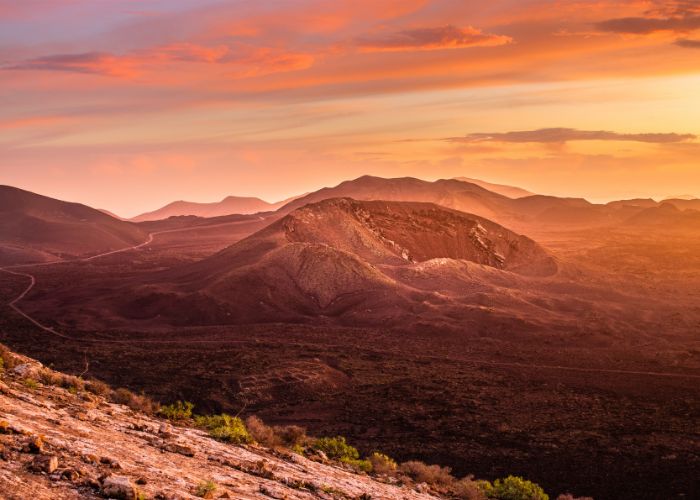Spain has beautiful nature that is worth protecting. Consequently, more and more tourist destinations in Spain are imposing numerus clausus or restrictions on the number of daily visitors. These include, the maximum number of people allowed to enter a particular beach, restrictions on vehicles on a local road. And, furthermore, there are restrictions on pleasure boats near protected islands. The aim of these measures is to prevent overcrowding and ensure sustainable tourism.
The images, again this summer, of rows of mountaineers, for example, have rekindled the debate on tourism in the countryside. Excessive crowds can increase the risk of danger to people. However, they also threaten natural habitats that are already severely degraded and eroded. Spain has plenty of examples where there are restrictions on tourism in order to promote nature conservation. This includes;
- Galicia’s Las Catedrales beach, a natural monument of sand and rock sculpted by the sea
- Doñana nature reserve in Andalucia
- Teide volcano on Tenerife.
Also read: The other side of Camino de Santiago
Natural areas, because of their enormous ecological value, must be protected from mass tourism that could affect them, with regulations that allow the public to enjoy them while guaranteeing their conservation, explains Ecologistas en Acción spokesman Pau Monasterio. In the last twenty years, tourism in Spain’s national parks has increased by 77%. That is nearly 16 million visitors a year. This is according to a report by the association Eco-union. The report cites transport and social networks as causes that make the hidden popular environments. However, the pandemic impact, which has made many natural areas a haven for the city must be added too.
Restrictions on tourism by Autonomous Community
Asturias
Asturias maintains its special transport plan for the Covadonga Lakes. This is the most visited spot in the busy Picos de Europa National Park. Therefore, during peak periods access is only possible by bus or taxi with a permit in Cangas de Onis.
Basque Country
On the Vizcaya coast, access to the islet of San Juan de Gaztelugatxe has reopened to the public. However, there is a limit of almost 1,500 people per day.
Castilla-La Mancha
In Cuenca, there are plans to limit visitor numbers to 400 at the Chorreras del Cabriel natural monument. This is a site in the Biosphere Reserve where 11 bathers were rescued from waterfalls this summer, to 400.
Madrid
The Autonomous Community of Madrid, permits swimming only in the natural areas of Los Villares, the San Juan reservoir, Alberche beach and Las Presillas (Rascafría). Furthermore, in La Pedriza – one of the most visited places in the Sierra de Guadarrama National Park – vehicles and parking are restricted.
Extremadura
In Extremadura, access is restricted to the small natural monuments of Cueva Castañar (Cáceres) and Cueva Fuentes de León (Badajoz).
Galicia
Reservation of a beach in Galicia is required. However, it is free online. This is, the beach at Las Catedrales, in Ribadeo (Lugo).
Navarre
In Navarre, access to the source of the river Urederra, in the Urbasa park, is limited to 500 visitors; in the Leurza reservoirs and the Orgi forest, there is a quota for cars.
Valencia
In the Valencia region, motor vehicle access in summer is regulated in the Sierra de Irta natural park, a marine reserve of importance for fishing (Castellón); and in Alicante, in areas such as the red route of the Peñón de Ifach (Calpe), there is a visitor quota, as there is for the cliffs of Cabo de San Antonio, within the protected area of the Montgó natural park.
Canary Islands
The Canary Islands archipelago, has around 15 million tourists per year. Teide National Park, one of the busiest in Spain, has a quota of 200 visitors per day, as does Timanfaya, in the Lanzarote Fire Mountains, where access is paid. Meanwhile in Garajonay, with the laurel forests of La Gomera, the number of vehicles is limited to Las Mimbreras, in El Cedro. In Gran Canaria, non-accessible zones have also been established on the beach of Maspalomas Nature Reserve, and on Fuerteventura, there are quotas in Lobos, an uninhabited volcanic islet off the dunes of Corralejo.
Balearic Islands
In the Balearic Islands, with 50% of the Spanish Posidonia beds in the water, restrictions have been extended and a boating licence is required to enter the Cabrera Maritime-Terrestrial National Park, and on Mallorca visitors are not allowed to leave the marked paths. Furthermore, this summer environmental educators have been hired by the government on the beaches of the Balearic Islands to inform bathers about the values of the dune systems in the protected areas.
Andalucia
In Andalucia, the Doñana national park has for years restricted access, with a maximum of 886 people per day, from the El Acebuche and El Rocío routes – both from Huelva – and the river route from Sanlúcar de Barrameda in Cadiz.
Aragon
Restrictions have been in place for years in the Ordesa y Monte Perdido National Park.
Murcia
In the Region of Murcia, there are restrictions on private motor vehicles in the regional park of Calblanque, Monte de las Cenizas and Peña del Águila,
Down with success?
The analysis of thousands of online opinions from users on 125 natural sites in Spain shows that these places generally receive very good ratings, according to the company Vivential Value, which specialises in tourist information. However, the data also reveals worrying trends: excessive concentration in certain natural parks, high seasonality, a growing sense of overcrowding and mobility problems, and also anti-social behaviour in rural areas.


